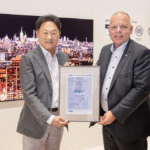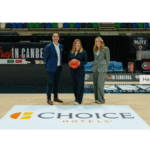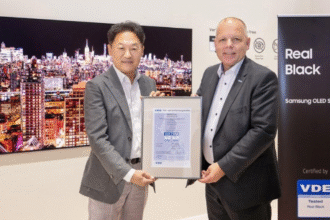Knight Frank has launched The Residence Report, a new annual publication, which looks at luxury residential development globally, and at the heart of the report is The Branded Residence Survey. The survey results confirm a sector seeing strong expansion, with double digit annual growth, and with the number of branded schemes to rise significantly. The pipeline data confirms we will see more hotel schemes, and more non-hotel luxury brands, but we will also see the growth in purpose-led brands – and this area of the market is beginning to compete with the hotel brands.
Dominic Heaton-Watson, Associate Director, International Residential, Knight Frank Property Hub, says:
“Luxury residential developments are moving beyond location and prestige. They are becoming centres of innovation — integrating design, lifestyle and placemaking to create environments where people can truly live, connect and belong.”
Adrian Yeoh, Executive Director, International Project Marketing, Knight Frank Property Hub, adds:
“The trends we see globally are equally relevant to Asia-Pacific and Malaysia. Buyers are increasingly focused on wellness, community, and long-term value rather than prestige alone. With Malaysia emerging as a potential hub for branded communities, developers here have the opportunity to align with these global shifts – creating residences that are not only world-class in quality but also deeply attuned to the aspirations of local and regional buyers.”
The Global Branded Residence Survey 2025
For this year’s Global Branded Residence Survey, Knight Frank assessed the portfolios of nearly 80 luxury brands, from major established hotel groups such as Four Seasons and Ritz-Carlton to more recent non-hotel entrants including Bentley and Aston Martin. More than 1,000 live and pipeline schemes were reviewed across 83 countries, revealing an increasingly diverse sector in growth mode.
A GROWTH SECTOR
Liam Bailey, Global Head of Research commented, “The branded residences sector has experienced strong, sustained growth, with the number of schemes rising from 169 in 2011 to 611 today and a forecast 1,019 by 2030. Unit numbers have surged in parallel – from just over 27,000 in 2011 to more than 162,000 projected by 2030. Momentum has accelerated since 2023, fuelled by growing demand for branded living and developers’ appetite for premium positioning.”
While growth is expected to moderate after 2028, the sector is projected to keep expanding, supported by increasing geographic diversity and the entry of new non-hotel brands.
US DOMINANCE IS (ONLY SLOWLY) ERODING
North America remains the dominant region for global branded residences – particularly the US – although its share of schemes is declining, from 32.7% of live schemes to 26.2% of pipeline projects. The Middle East shows the most significant increase, with its share of pipeline developments (26.7%) well ahead of its share of live projects (15.9%), driven largely by rapid expansion in the UAE and Saudi Arabia. Asia-Pacific’s share is expected to ease, despite a strong pipeline in markets such as Thailand and India. This year’s survey indicates that developers are increasingly targeting growth markets in the Middle East, Latin America and beyond.
THE GLOBAL CENTRE OF GRAVITY IS SHIFTING EASTWARD
Over time, the centre of gravity for global branded developments has been shifting steadily eastward – and slightly southward. Using the average latitude and longitude for all live and pipeline schemes, we can see how US dominance in the 1990s positioned the global centre of activity well to the west of the Atlantic. Since then, growth in Asian markets – and, more recently, in the Middle East – has pulled this point progressively eastward.
HOTEL BRANDS DOMINATE, NOW AND IN THE FUTURE…
With new brands entering the residences sector seemingly every day, you might be forgiven for thinking that car, fashion, sport or watch brands are the main story. They’re not. In fact, 83% of existing branded residences are hotel brands, and while this share is forecast to dip slightly in the future, it will remain at around 80%.
…WITH ACTUAL HOTELS INCREASINGLY AN OPTIONAL EXTRA
Looking at hotel brands alone, the vast majority of live schemes (82%) are, perhaps unsurprisingly, co-located with a hotel. However, looking at the future pipeline this is set to dip to 70%. North America and the Middle East are the leaders in going it alone, with 49% and 43% of pipeline hotel branded schemes respectively being planned as standalone developments.
Legal Disclaimer: The Editor provides this news content "as is," without any warranty of any kind. We disclaim all responsibility and liability for the accuracy, content, images, videos, licenses, completeness, legality, or reliability of the information contained in this article. For any complaints or copyright concerns regarding this article, please contact the author mentioned above.
















